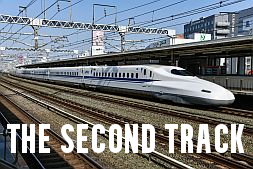Why Australia’s defence needs a shake up
I am continuing to put forward proposals for reform in significant policy areas. This week I will deal with defence, as well as Defence. Next week I will focus on how we could manage our federation better than we have so far.
What needs to be fixed in defence – and Defence – well, almost everything, except for the fighting spirit of our men and women in uniform. First, the diarchy that runs Defence, splitting responsibilities between civilians and the ADF is a failure and we should acknowledge the problem…and fix it. It is a failure because it enables both sides of the divide to escape responsibility for bad or inadequate decision-making and because it has resulted in the waste of many billions of dollars buying expensive toys we do not need.
How do we fix this? By adopting a purchaser/provider model. The Government is the funder, one behalf of the taxpayers of Australia, the owners. A slimmed down Department of Defence should be the purchaser, with responsibility for strategy and policy. The ADF should be the provider, with responsibility for the delivery of agreed outcomes and outputs. To ensure that the Government gets the best advice, members of the ADF should be allocated to serve with the purchaser – but as uniformed public servants, not servants of the arm of the ADF from which they come. This model should be modified only in times of war – and I mean war, not peacekeeping or warlike missions. In times of war, the ADF should be allowed operational freedom to do what they do best – fight.
As for the ADF, the separation between army, navy and airforce is an archaic model that ill serves us in an era when wars are fought by integrated forces, supported – and sometimes led – by information and communication technology. The three elements of the ADF should be integrated into one fighting force that has a broad range of capabilities. I am not suggesting turning sailors into soldiers or vice-versa; I am talking about creating functional capabilities that suit the twenty-first century.
That means that the capabilities of the Defence Signals Directorate (DSD) should be recognised as a fourth element of modern war fighting and should also be part of an integrated ADF.
Now, let us look at procurement. Review after review, audit after audit, has shown that the Defence Materiel Organisation (DMO) has failed to improve the efficiency, effectiveness and appropriateness of defence procurement. It is time to get rid of it, as an unnecessary overhead. In my model, procurement would be the role of the purchaser, under Government direction and with ADF advice – plus truly independent advice, on both procurement methods and on the subject of the proposed acquisition.
On specific procurements underway now, why are we building submarines in Australia, with our poor record for construction of such complex devices and the certainty that budget targets will be grossly overshot? Right now we could buy, for half the price of building submarines here, German submarines that would do what we want them to do and could be here and operational in months, rather than years. That decision alone would put $800 million into Consolidated Revenue.
Then there is the Joint Strike Fighter (JSF), which is gross overkill in terms of our likely requirements, is likely to be both costly (at least $16 billion dollars) and less effective than projected, and which is years away from completion. We should be realistic about our likely needs and choose less risky and less expensive solutions, rather than being driven by an understandable desire among the senior uniforms for the best there is – or what they think is the best. Remembering that these are the people who bought Leopard tanks we would never use and rusty support ships worthy of McHale’s Navy, just to cite two of many, many examples.
Oh – memo for Mr Abbott, while you are asking for business cases, would you please get me one for the JSF too?








ken saloz
June 28, 2011 at 12:19 am
Australia’s defence does need a shake up.
THE COST FOR OUR MARITIME SECURITY OF OUR NORTHERN LITTORALS AND SHIPPING LANES COULD NOT ONLY BE GREATLY REDUCED, BUT SECURITY MADE EVEN GREATER WHILE PROVIDING GREATER SUPPORT FOROUR US ALLIES.
Zbygnyu
November 25, 2016 at 3:08 am
“Defence” in the 21st century.
I'd like to introduce a concept that many will reject, at least initially. I believe that both the definitions (sc. the understanding of what they are) and the roles (sc. the functions and therefore the preferred personnel) of 'Defence' and 'The Military' need to be SEPARATED, re-evaluated and redefined.
The reasons are neither simple nor obvious, but will quickly be evident to those familiar with both.
'The Military' means, in a simplistic view, the Army, Navy and Airforce. 'Defence' today more often refers to such things as intelligence agencies, counter-terrorism, cyber-defence, financial structures and the like.
I'll state a personal view that many might dispute. There is not the slightest chance that either China or Indonesia will 'invade Australia' in the military sense. To put it bluntly, they can obtain EVERYTHING that they desire by the simple expedient of bribing corrupt Australian bureaucrats, 'public servants', politicians and business-people. Proofs of this statement can readily obtained by anyone who knows how to use an Internet search engine.
REAL DEFENCE of the country's survival, ambitions, values and citizenry requires that these present-day realities be acknowledged in preference to the 'Boys with Expensive Toys' attitude that has not only become entrenched as the nineteenth-century basis of the Australian Defence Establishment, but has long been formalized as the publicly-venerated 'Anzac Warrior Religion' that the mass media now abuses as a tear-jerking prelude to every relevant news item.
I'll ask the Author of this thread to pass judgment on this opinion before proceeding, since I'd prefer his (qualified?) approval rather than his animosity.